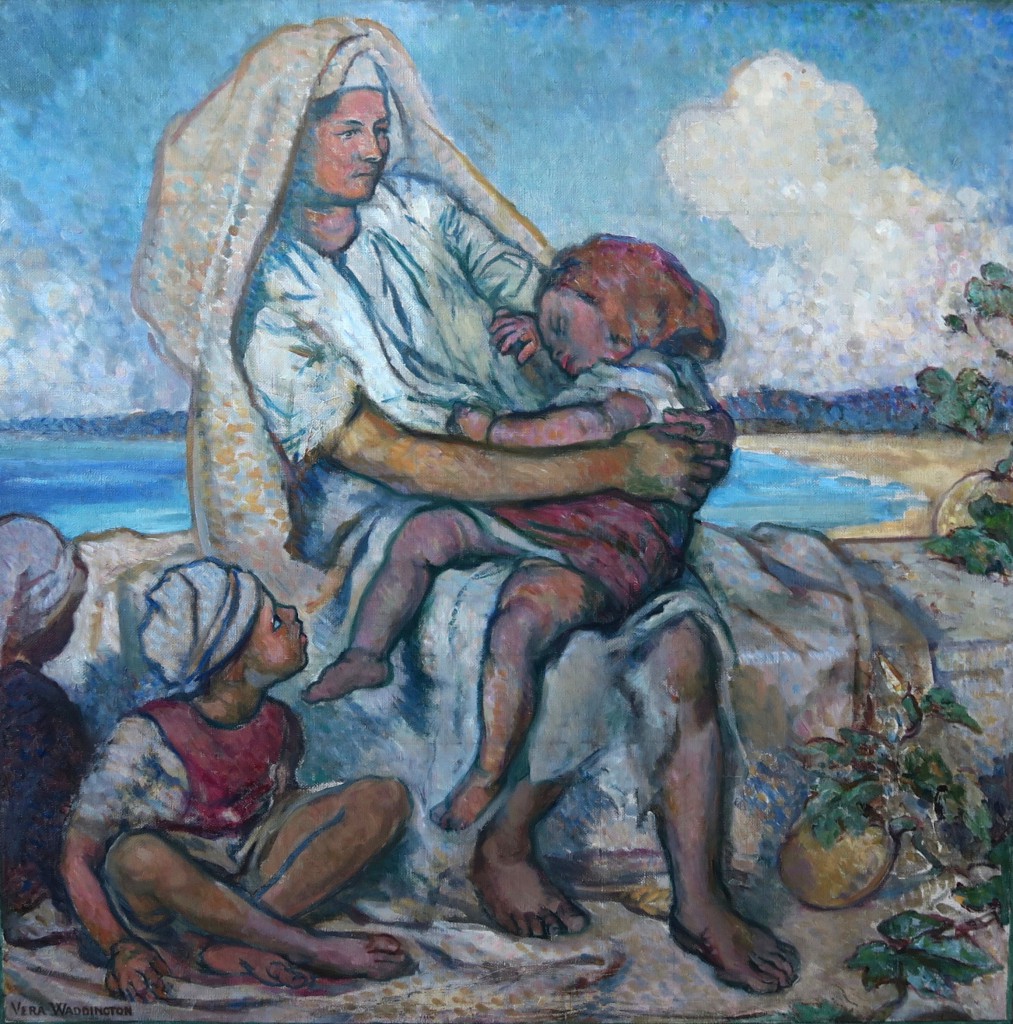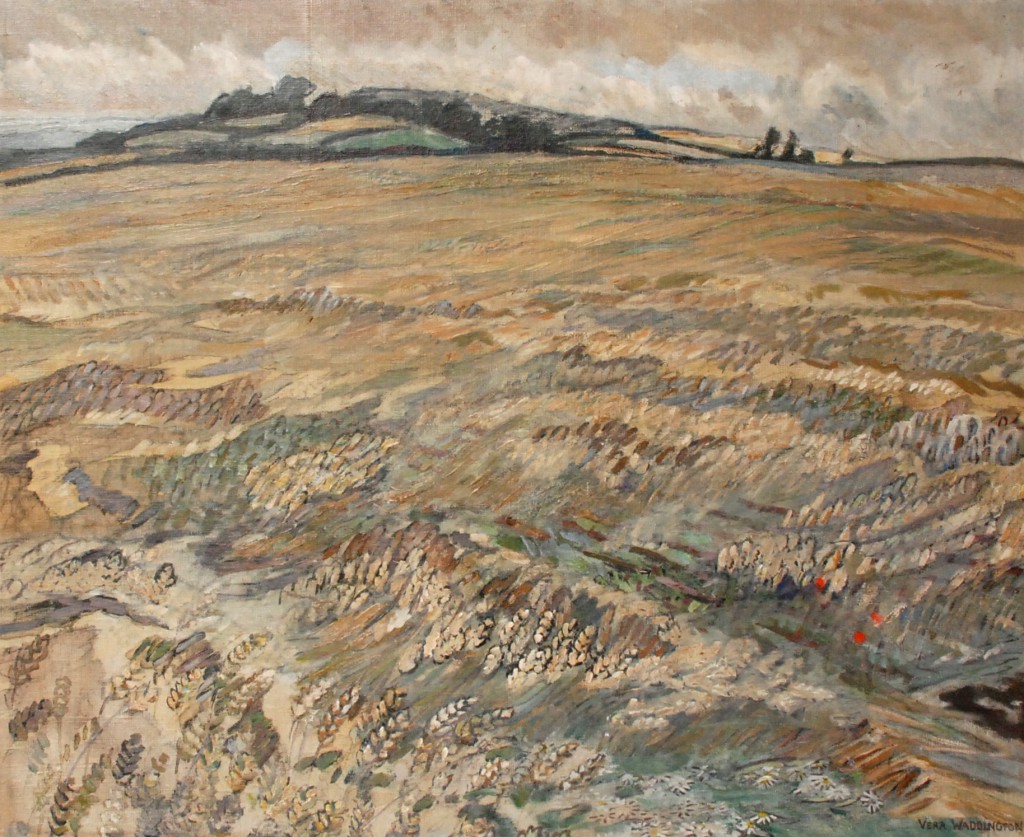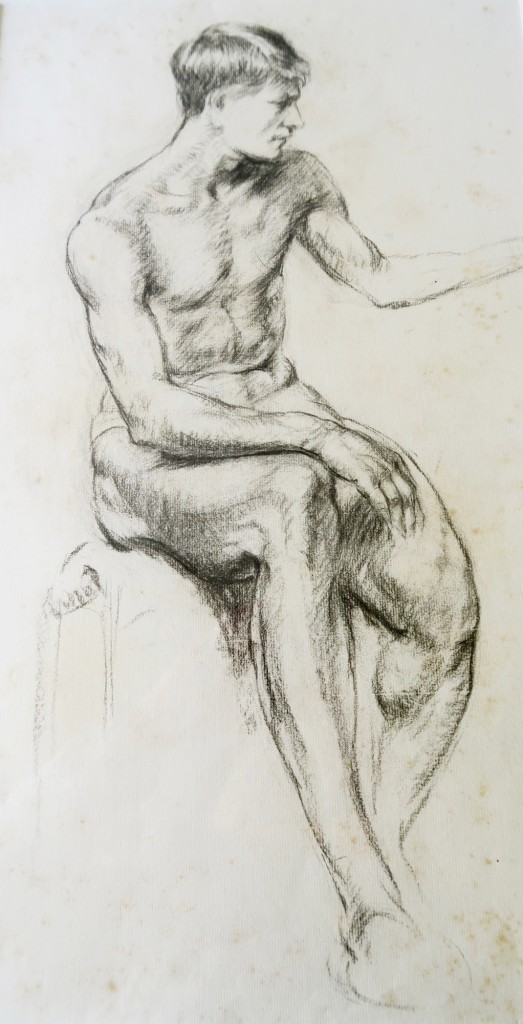Vera Waddington: An Appreciation of her Work as an Artist
It is important to locate Vera Waddington’s approach to her artistic work within the broader context of artistic developments emerging in her early professional career. Where does she stand in the ‘crisis of brilliance’ a term coined by her mentor Henry Tonks, the formidable lecturer in drawing and later Professor of Fine Art at the Slade School?
The term encapsulated the complex and shifting focus of the challenges facing art students in the period from the late 1890’s and carrying on into the hellish cauldron of the First World War. Initially a first crisis, which influenced Vera started as a challenge to the canons of Nineteenth century British painting around the time Tonks started teaching at the Slade in 1892. Tonks stressed the primacy of drawing as the prerequisite for all fine artists.
He accepted impressionism, one of the few Continental influences he approved of, and adapted some of its techniques to his own painting. Tonks was also aware that his students over this period were influenced not just by the Modern but also by older traditions looking backwards in some cases to pre Italian Renaissance neo-primitive approaches. Hence there were a number of different contending narratives about the form, content and actual purpose of art informing the choices made by Slade students about their own individual direction. These decisions were undertaken within the wider context of changing social, political and economic conditions that challenged the status quo, as well as the dynamics of private and public institutions, which influenced the public reception of art and its commercial organisation.
In his book, The Crisis of Brilliance (Old Street Publishing, 2009), David Boyd Haycock concentrates on the second period of crisis from 1908 and the impact of the Great War on five major artists trained at the Slade. Here he emphasises the significance of personal background and interpersonal relationships among these young artists and its effect on their work.
This is a period when artists were increasingly exposed to the influences of the art and theory of modern contemporary European painters. A number of young painters were drawn to the aesthetic standards and techniques expressed in the post-impressionist exhibitions of 1910 and 1912, mounted by Roger Fry, a teacher at the Slade. Tonks however disapproved of these developments, which privileged style and form over realism and narrative. He warned his students against them.
It is against this background that Vera developed and honed her visual language and made decisions about her own work and as importantly understood how that work would be evaluated and how to market it. There was and still is a tendency to judge works of art as to the degree they conform to a certain ‘ism’ or artist seen as major figure within that ‘ism’. What is possibly an equally fruitful way of assessing the work of an artist like Vera is to see how she takes successfully from what is available and makes it her own. This entails her corresponding less to a style or idea of a particular art movement and more of her incorporating and blending influences that contribute to what she is trying to express.
Vera was well aware of contemporary artistic developments. She exhibited two works in the important 1914 exhibition at the Whitechapel Gallery entitled ‘Twentieth Century Art: A Review of Modern Movements’. The exhibition examined the ‘progress in art’ and attempted to reflect and codify the diverse influences on younger British artists over the previous twenty years. Some of Vera’s work reflects that element of vitality that had developed in painting as noted in the catalogue to the exhibition; also the desire to make a more personal statement in relation to the subject and life in general that pervaded that exhibition.
Vera was also aware of the social epithet woman artist and its connotations. Critical reviews tended at the time to be rather patronising to artists who were women. Unlike her mentor Tonks, she approved of the post-impressionists. In fact her ‘Maternity’ picture was described by the Observer (26 November 1911) as a post- impressionist work, though it has elements in common with Augustus John’s earlier decorative panels. Several reviews of her work comment favourably on the influence of John. Like him she tempers the illusion of three-dimensional space for a more linear creation of commanding human types and appropriate attitudes and gestures.
We do not know for sure what she felt about Cubism, Futurism or Vorticism, this latter developed by her contemporary Wyndham Lewis. That she appreciated the Futurist influenced Christopher Nevinson is shown by her purchase of Nevinson’s pastel drawing, French Troops Resting at his solo exhibition at the Leicester gallery in 1916. However she did not attempt to emulate these styles directly. It should not be forgotten that the majority of artists did not fully absorb modern artistic movements and, as importantly, nor did the buying public.
Haycock’s exploration of the dynamic between the personal and the creative in the work of artists is significant in the case of Vera who had very strong commitments to her family and especially her father. These limited her attendance at the Slade but also structured her artistic opportunities for participating in a studio culture and escaping from the label female artist.
Her diaries show a close friendship with Duncan Grant; they worked together and she appreciated his criticism and approval. However in no way would Vera have become involved in a bohemian lifestyle exemplified by the Bloomsbury group. Despite social contact there is no evidence that she was particularly friendly with them, other than with Grant. In response to Virginia Woolf (ne Stevens) who commented that a mural she was working on with Duncan Grant at 38 Brunswick Square (the Bloomsbury base in 1911) required more animation, Vera added a flight of green parrots!
Vera was not part of an artistic peer group and, unlike Grant who had met Picasso and Fauvist painters, was not exposed to their work by personal contact. While she travelled extensively in Europe and Asia visiting galleries and museums, these trips were undertaken within the confines of her family. In a way this permitted Vera more detachment as a person and an artist yet it meant that she was not active at the centre of contemporary artistic debates.
Whilst Vera’s work was exhibited at major galleries and various significant artistic clubs and associations and was well received she was never personally integrated into them. Hence her experimentation was not undertaken within the avant-garde. Rather Vera expanded her technical range and repertoire, experimenting with different media.
Vera’s strengths can be found in her excellent drawing, acknowledged by Tonks, and the range of her work in several media. Apart from oil, watercolour and pastel, Vera trained in calligraphy, experimented with stained glass, and produced fine wood engravings and lino cuts. She worked in a variety of genres, including portraiture, still life, landscape and children’s studies.
Her well received solo show of Chinese Studies (Carfax Gallery 1910) was notable for the naturalistic non stereotypical portrayals of Chinese people in everyday life. These were very progressive depictions and all the pictures were purchased. The critics particularly appreciated the quality of her drawing.
There was a parallel, social engagement aspect to her work. Like her mentor Tonks, who applied his artistic skills to pioneer reconstructive surgery, Vera produced, wrote and illustrated a massage training book, whilst working for the Red Cross during the war. This went into several editions and became a standard work. The graphic style of What every Masseuse should Know, was described in the Spectator thus: ‘they are outline drawings, and in style might be termed a kind of Matisse-cum-Slade which has adapted itself very charmingly to its present utilitarian purpose.’
At the end of the war she designed Pangbourne war memorial and was commissioned to produce a role of honour for the church of St Margaret’s, Mapledurham. To do this she taught herself calligraphy and illumination. The quality of the illustrations and the calligraphy convey a deep respect for those local people who served and sacrificed their lives for their country.
Vera’s compulsion to paint and create never diminished. During the Second World War she tried unsuccessfully to be accepted as a war artist. In 1954 before her death at the age of 78 she was still producing new wood engravings.


